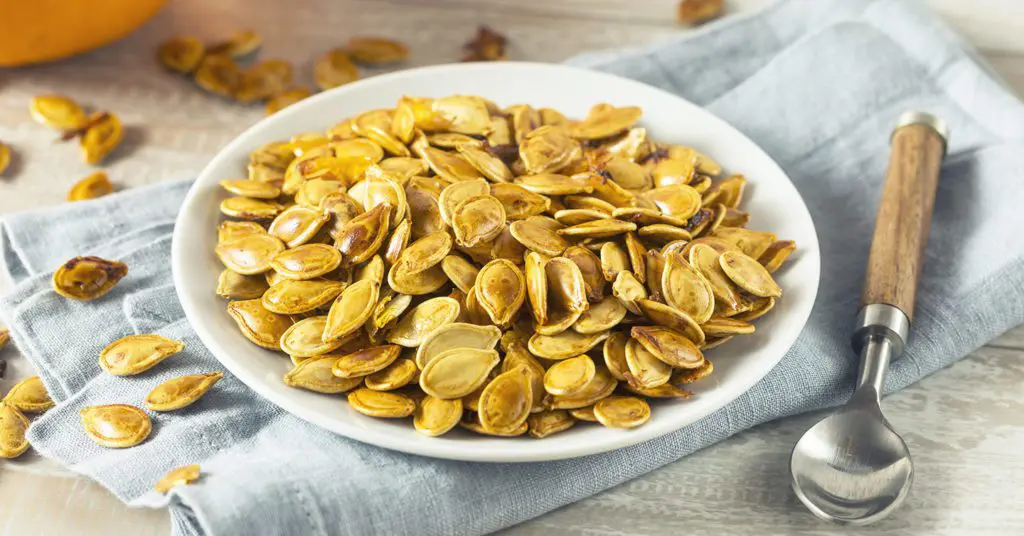How Much Pumpkin to Give Your Dog: A Comprehensive Guide
Pumpkin offers numerous health benefits for dogs, including aiding digestion, weight management, and overall health, thanks to its rich fiber, vitamins, and minerals. However, serving the right amount and type is key to maximize benefits without any adverse effects.
This guide will walk you through the benefits, serving sizes, and how to select the right pumpkin for your dog, empowering you to make informed decisions about including pumpkin in their diet.
Key takeaways
Pumpkin is a nutritious addition to a dog’s diet, offering benefits for digestion, weight management, and overall health.
The recommended amount of pumpkin for dogs is 1 teaspoon per 10 pounds of body weight for raw or cooked fresh pumpkin, or 1 tablespoon per 10 pounds for canned pumpkin.
Always choose plain, unsweetened pumpkin, either fresh or canned, avoiding pumpkin pie mix which contains added sugars and spices.
Start with small amounts and monitor your dog for any adverse reactions before gradually increasing the serving size.
Consult your vet before adding pumpkin to your dog’s diet, especially if they have any existing health conditions.
Remember, pumpkin should be a supplement to a balanced diet, not a replacement for complete, balanced dog food.
Nutritional Value of Pumpkin for Dogs
Fiber content and its benefits
One of the most significant advantages of pumpkin is its high fiber content, making it an excellent dietary addition for dogs. Soluble fiber in pumpkin can help slow digestion, regulate blood sugar levels, and promote a healthy gut environment by fostering the growth of beneficial bacteria.
Insoluble fiber, on the other hand, adds bulk to the stool, helping to alleviate both constipation and diarrhea. The combined effect of soluble and insoluble fiber in pumpkin supports overall digestive health in dogs.
No products found.
Essential vitamins and minerals
Pumpkin is packed with essential vitamins and minerals that contribute to your dog’s well-being. Some of these key nutrients include:
- Vitamin A: Necessary for healthy vision, skin, and immune system function.
- Vitamin C: Supports immune health, collagen production, and acts as an antioxidant.
- Vitamin E: Protects cells from damage caused by free radicals and supports a healthy immune system.
- Potassium: Vital for maintaining proper muscle function, hydration, and nerve communication.
- Iron: Essential for the formation of hemoglobin and the transportation of oxygen in the blood.
- Calcium: Supports strong bones, teeth, and proper muscle and nerve function.
Low calorie count and weight management
Pumpkin is a low-calorie food, making it a great addition to your dog’s diet if they need to shed some weight or maintain a healthy weight. With only about 30 calories per cup of cooked pumpkin, it’s an excellent way to add bulk to your dog’s meals without significantly increasing their caloric intake.
This can help them feel full and satisfied without overeating or gaining unnecessary weight.

How Pumpkin Can Help with Dog’s Digestive Health
Treating diarrhea
Pumpkin’s high fiber content can work wonders for dogs suffering from diarrhea. The soluble fiber helps absorb excess water in the stool, firming it up and reducing the severity of diarrhea. In addition, the insoluble fiber adds bulk, further stabilizing bowel movements.
To help alleviate diarrhea, consider adding a small amount of pumpkin to your dog’s regular diet.
Combating constipation
Conversely, pumpkin can also effectively alleviate constipation in dogs. The insoluble fiber content in pumpkin adds bulk to the stool and promotes regular bowel movements, while the soluble fiber softens the stool by retaining water.
Both of these actions can help relieve constipation, making it easier for your dog to pass stools comfortably.
Balancing gut bacteria
Pumpkin is a natural prebiotic, meaning it provides food for the beneficial bacteria living in your dog’s gut. These good bacteria play a critical role in maintaining a healthy digestive system and feeding them with prebiotics like pumpkin can contribute to a balanced gut environment.
A balanced gut can lead to improved nutrient absorption, better immune function, and overall enhanced well-being for your dog.
Encouraging hydration
Pumpkin has a high-water content, making it a great way to help keep your dog hydrated. Proper hydration is essential for overall health, and it is especially important for dogs with digestive issues.
The added moisture from pumpkin can help with digestion, promote regular bowel movements, and support healthy kidney function. Including pumpkin in your dog’s diet can be an effective way to increase their daily water intake, ensuring they stay hydrated and healthy.

No products found.
Types of Pumpkin to Give Your Dog
Canned pumpkin puree
Canned pumpkin puree is a convenient and widely available option for adding pumpkin to your dog’s diet. It’s important to choose pure pumpkin puree without any added sugars, spices, or preservatives, as these additives can be harmful to your pet.
Make sure to avoid pumpkin pie filling, as it often contains unhealthy ingredients like sugar, spices, and artificial flavors that aren’t suitable for dogs.
Fresh pumpkin
If you prefer a more natural approach, you can opt for fresh pumpkin. To prepare fresh pumpkin for your dog, simply remove the skin and seeds, cut it into small cubes, and cook it either by steaming, boiling, or roasting until soft.
Once cooked, you can mash or puree the pumpkin and serve it to your dog, ensuring the consistency is similar to canned pumpkin puree. It’s essential to let the pumpkin cool down before offering it to your dog.
Pumpkin seeds
Pumpkin seeds can also be a nutritious treat for dogs when given in moderation. They are a rich source of healthy fats, antioxidants, and various minerals, which can support your dog’s overall health.
To prepare pumpkin seeds for your dog, remove the outer shell and roast them in the oven at a low temperature for about 15 minutes. Make sure not to add any salt or seasoning. Pumpkin seeds should be given sparingly, as the high fat content can cause stomach upset if consumed in large quantities.

Determining the Right Amount of Pumpkin for Your Dog
Factors to consider
To determine the appropriate amount of pumpkin for your dog, several factors must be taken into account:
- Size and weight of your dog: Larger dogs will typically require a larger serving size than smaller dogs.
- Current health conditions: If your dog has specific health concerns or is on a special diet, consult your veterinarian before introducing pumpkin to their diet.
- Existing diet: Consider your dog’s current food intake, including other fruits, vegetables, or fiber-rich foods, to avoid overloading their digestive system.
General guidelines for pumpkin serving sizes
While each dog is unique, and their needs may vary, here are some general guidelines to help you determine the right amount of pumpkin to give your dog:
- Small dogs (10-20 lbs): 1-2 teaspoons per day
- Medium dogs (20-50 lbs): 1-2 tablespoons per day
- Large dogs (50-100 lbs): 2-5 tablespoons per day
- Extra-large dogs (100+ lbs): 5-8 tablespoons per day
It’s important to start with a smaller serving size when first introducing pumpkin to your dog’s diet, then gradually increase the amount according to your dog’s needs and tolerance.
Consulting with a veterinarian
Always consult your veterinarian before making any changes to your dog’s diet, especially if they have pre-existing health conditions or are on medication. Your vet can provide personalized recommendations on the appropriate serving size of pumpkin for your dog based on their specific needs and circumstances.
In addition, they can guide you on how to monitor your dog’s progress and make adjustments as needed.

How to Incorporate Pumpkin into Your Dog’s Diet
Mixing with regular food
One of the easiest ways to introduce pumpkin to your dog’s diet is by mixing it into their regular meals. Start with a small amount, gradually increasing it as your dog becomes accustomed to the taste and texture.
Ensure you’re maintaining the right balance of nutrients by reducing the portion size of their existing food to account for the added pumpkin.
Creating homemade pumpkin treats
Another fun and creative way to incorporate pumpkin into your dog’s diet is by making homemade pumpkin treats. You can find numerous dog-friendly pumpkin treat recipes online, ranging from simple no-bake options to more elaborate baked goods.
By making your own treats, you have complete control over the ingredients, ensuring your dog gets a healthy and tasty snack without any harmful additives.
Here’s a simple recipe to get you started:
Ingredients:
- 1 cup cooked and mashed pumpkin (canned or fresh)
- 1/4 cup peanut butter (make sure it’s xylitol-free)
- 2 cups whole wheat or oat flour
- 1 egg
Instructions:
- Preheat your oven to 350°F (180°C) and line a baking sheet with parchment paper.
- In a large bowl, combine the pumpkin, peanut butter, and egg until well mixed.
- Gradually add the flour to the pumpkin mixture, stirring until a dough forms.
- Roll out the dough on a floured surface to approximately 1/4-inch thickness.
- Use a cookie cutter to cut out shapes and place them on the prepared baking sheet.
- Bake for 20-25 minutes, or until the treats are firm and golden brown.
- Allow the treats to cool completely before offering them to your dog.
Purchasing pumpkin-based dog products
Several pet food manufacturers offer dog foods, treats, and supplements that contain pumpkin. If you prefer a more convenient option, consider buying these products as an easy way to incorporate pumpkin into your dog’s diet.
Be sure to choose high-quality, reputable brands and always read the labels to ensure that the pumpkin-based product is free of harmful additives and is appropriate for your dog’s specific dietary needs.
Potential Side Effects and Precautions
Allergic reactions
While pumpkin allergies are relatively rare in dogs, it’s essential to keep an eye out for signs of an allergic reaction when introducing any new food. Symptoms of an allergic reaction may include itching, skin rashes, vomiting, diarrhea, or difficulty breathing.
If you notice any of these signs after feeding your dog pumpkin, discontinue use immediately and consult your veterinarian.
Overfeeding pumpkin
Though pumpkin is a healthy addition to your dog’s diet, overfeeding can lead to adverse effects. Too much pumpkin can cause digestive upset, including gas, bloating, or diarrhea.
Additionally, excessive consumption of vitamin A, found in pumpkin, can result in hypervitaminosis A, a toxic condition that can harm your dog’s bones and joints.
To prevent these issues, always follow the recommended serving sizes and consult with your veterinarian to ensure you’re providing the correct amount for your dog’s specific needs.
Interactions with medications or health conditions
If your dog is on medication or has a pre-existing health condition, it’s crucial to consult your veterinarian before introducing pumpkin to their diet. While pumpkin is generally safe for most dogs, it may interfere with certain medications or worsen specific health conditions.
Your veterinarian can guide you on whether pumpkin is an appropriate addition to your dog’s diet and how to safely incorporate it without causing harm.
Related:
Frequently Asked Questions
Can I give my dog pumpkin every day?
Yes, you can give your dog pumpkin daily, as long as you follow the recommended serving size guidelines and ensure it’s not interfering with their regular diet or causing any side effects.
Is it safe to give my dog pumpkin seeds?
Yes, pumpkin seeds are safe for dogs when given in moderation. Make sure to roast the seeds and remove the outer shell before feeding them to your dog.
Can puppies eat pumpkin?
Yes, puppies can safely eat pumpkin. However, it’s essential to introduce pumpkin gradually and follow the same guidelines for serving sizes as with adult dogs.
How long does it take for pumpkin to help my dog’s digestion?
The effects of pumpkin on a dog’s digestive system can vary, but generally, you should notice improvements in your dog’s digestion within 24-48 hours after incorporating pumpkin into their diet.
Can I give my dog pumpkin if they have diabetes?
Pumpkin is generally safe for dogs with diabetes due to its low glycaemic index. However, always consult your veterinarian before making any changes to your diabetic dog’s diet.
Final Thoughts
Pumpkin offers a range of benefits for dogs, from supporting digestive health and weight management to providing essential vitamins and minerals. Its high fiber content and low-calorie count make it an excellent addition to many dogs’ diets, improving overall well-being and enhancing their quality of life.
It’s essential to understand the right amount and type of pumpkin to give your dog to ensure they reap the maximum benefits without experiencing any adverse effects.
Carefully monitor your dog’s pumpkin intake, following the recommended serving sizes and adjusting as needed based on your dog’s specific needs and circumstances.
Incorporating pumpkin into your dog’s diet can be a rewarding experience for both you and your furry friend. Not only will it provide a tasty treat they’ll love, but it will also contribute to their overall health and well-being.
By following the advice and guidelines outlined in this comprehensive guide, you can confidently and safely introduce pumpkin to your dog’s meal plan, supporting their health and happiness for years to come.






